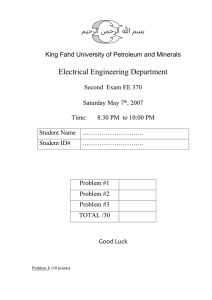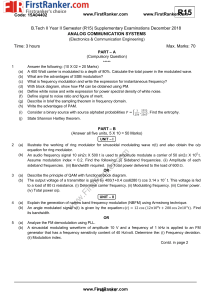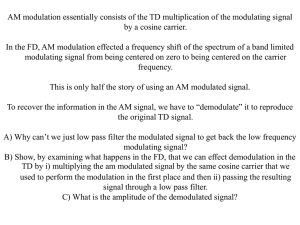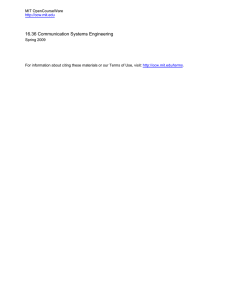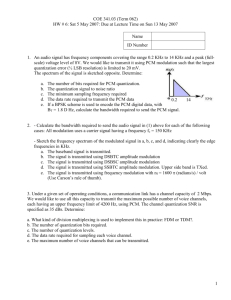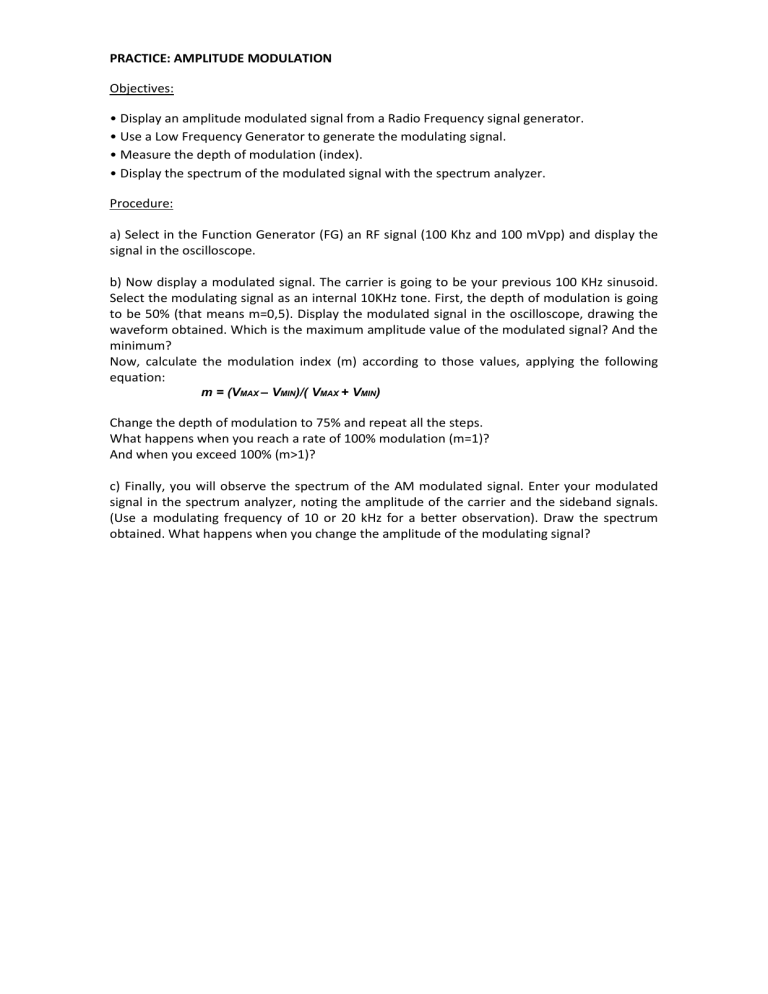
PRACTICE: AMPLITUDE MODULATION Objectives: • Display an amplitude modulated signal from a Radio Frequency signal generator. • Use a Low Frequency Generator to generate the modulating signal. • Measure the depth of modulation (index). • Display the spectrum of the modulated signal with the spectrum analyzer. Procedure: a) Select in the Function Generator (FG) an RF signal (100 Khz and 100 mVpp) and display the signal in the oscilloscope. b) Now display a modulated signal. The carrier is going to be your previous 100 KHz sinusoid. Select the modulating signal as an internal 10KHz tone. First, the depth of modulation is going to be 50% (that means m=0,5). Display the modulated signal in the oscilloscope, drawing the waveform obtained. Which is the maximum amplitude value of the modulated signal? And the minimum? Now, calculate the modulation index (m) according to those values, applying the following equation: m = (VMAX – VMIN)/( VMAX + VMIN) Change the depth of modulation to 75% and repeat all the steps. What happens when you reach a rate of 100% modulation (m=1)? And when you exceed 100% (m>1)? c) Finally, you will observe the spectrum of the AM modulated signal. Enter your modulated signal in the spectrum analyzer, noting the amplitude of the carrier and the sideband signals. (Use a modulating frequency of 10 or 20 kHz for a better observation). Draw the spectrum obtained. What happens when you change the amplitude of the modulating signal?
